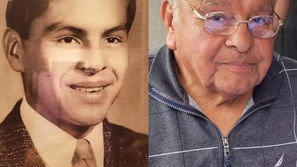Madera Unified a sanctuary district?
- Bill Coate
- Dec 19, 2016
- 3 min read
The recent presidential election has apparently raised considerable concern among the immigrant families of Madera regarding the “possible disruption of their residency due to immigration status.”
Superintendent Ed Gonzalez briefly alluded to this “concern” during Tuesday evening’s school board meeting when he explained an item on the agenda entitled, “Post Election Proposed Resolution.”
He suggested to the board that they put this issue on “its radar” and get ready to deal with it at a future board meeting.
In the meantime, the superintendent gave the board a couple of sample policies to use to guide its thinking about the post election fears that have allegedly rippled across the country.
The documents come from the San Francisco Board of Education and one has the same title as Madera’s agenda item—Post Election Proposed Resolution.
The first document is a resolution adopted by the San Francisco school board in 2007.
It began by acknowledging that San Francisco had a large immigrant community made up of both “legal and undocumented people.” It went on to affirm that the United States Supreme Court in 1982 ruled that undocumented children have the same rights to a free public education just as U.S. citizens do.
Following this, the document reports on numerous attempts by certain public officials to curtail the educational rights of undocumented children.
At that point, the SF document nails its main opponent — the U.S. Immigration and Customs Enforcement Office (ICE). Raids from this agency, according to the SF document, have caused parents to keep their children home from school.
Then the document says that in 1989, the SF Board of Supervisors made San Francisco a “City of Refuge” for undocumented workers. The ordinance forbade city resources from being used to enforce federal immigration laws
With this as a background, the SF board of education issued a list of do’s and don’ts for school employees. They were forbidden to ask students about their immigration status; they were not to require students to have social security cards; and they were not allowed to let ICE employees on any campus without the school superintendent’s permission.
Thus the first document provided to Madera Unified trustees was a position paper on how to protect undocumented immigrants from the activities of the U.S. Immigration and Customs Enforcement people.
The second document Gonzalez gave the board to consider was a model board policy, which could presumably be adopted by MUSD.
The title was “Board of Education Commitment to the Education of all Children and Making all Campuses a Safe Zone for Students and Families Threatened by Immigration Enforcement.”
At the center of this sample board policy is the declaration that every school site is to be a “safe place for all students and their families,” and the district will form partnerships with community based organizations who provide resources for families facing deportation and that a rapid response network be created to assist children whose family members have been detained.
Adoption of this policy would stipulate that questions from students or parents about their immigration status would not be referred to ICE but rather to a community-based legal organization that provides resources for immigrant families facing deportation.
There was no discussion of these sample documents at the meeting. Gonzalez simply acknowledged their existence and urged the board to give them due consideration.
The superintendent’s only comment was his avowed intention to “work with the board leadership and seek board direction regarding any future action the board might take.”
“I wanted to make sure the board had this on its radar. We will discuss it at a future board meeting.”
It was not apparent what was driving this issue in Madera. There was no evidence that the superintendent was pushing for a policy similar to that of San Francisco in Madera Unified.


























Comments